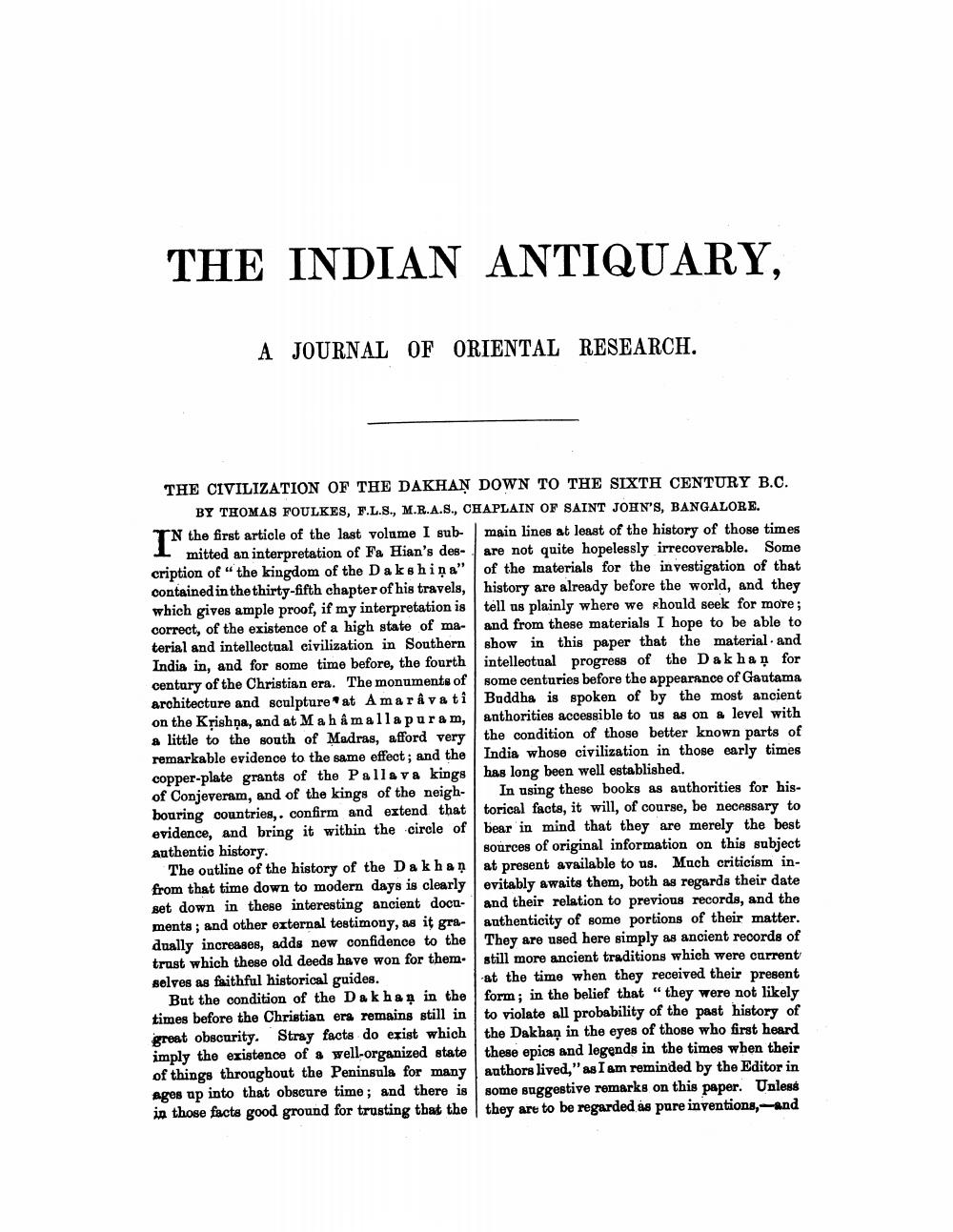________________
THE INDIAN ANTIQUARY,
A JOURNAL OF ORIENTAL RESEARCH.
THE CIVILIZATION OF THE DAKHAN DOWN TO THE SIXTH CENTURY B.C.
BY THOMAS FOULKES, F.L.S., M.R.A.S., CHAPLAIN OF SAINT JOHN'S, BANGALORE. TN the first article of the last volume I sub- main lines at least of the history of those times
mitted an interpretation of Fa Hian's deg- are not quite hopelessly irrecoverable. Some cription of the kingdom of the Dakshina" of the materials for the investigation of that contained in the thirty-fifth chapter of his travels, history are already before the world, and they which gives ample proof, if my interpretation is tell us plainly where we should seek for more; correct, of the existence of a high state of ma- and from these materials I hope to be able to terial and intellectual civilization in Southern show in this paper that the material and India in, and for some time before, the fourth intellectual progress of the Dak han for centary of the Christian era. The monuments of some centuries before the appearance of Gautama architecture and sculpture at Amaravati Buddha is spoken of by the most ancient on the Kộishộa, and at Mahamallapuram, anthorities accessible to us as on a level with a little to the south of Madras, afford very the condition of those better known parts of remarkable evidence to the same effect; and the India whose civilization in those early times copper-plate grants of the Palla va kings has long been well established. of Conjeveram, and of the kings of the neigh- In using these books as authorities for hisbouring countries,. confirm and extend that torical facts, it will, of course, be necessary to evidence, and bring it within the circle of bear in mind that they are merely the best authentic history.
sources of original information on this subject The outline of the history of the Da khan at present available to us. Much criticism infrom that time down to modern days is clearly evitably awaits them, both as regards their date set down in these interesting ancient docu- and their relation to previous records, and the ments; and other external testimony, as it gra- authenticity of some portions of their matter. dually increases, adds new confidence to the They are used here simply as ancient records of trust which these old deeds have won for them. still more ancient traditions which were current selves as faithful historical guides.
at the time when they received their present But the condition of the Dakhan in the form; in the belief that "they were not likely times before the Christian era remains still in to violate all probability of the past history of great obscurity. Stray facts do exist which the Dakhan in the eyes of those who first heard imply the existence of a well-organized state these epics and legends in the times when their of things throughout the Peninsula for many | authors lived," as I am reminded by the Editor in Ages ap into that obscure time; and there is some suggestive remarks on this paper. Unless in those facts good ground for trusting that the they are to be regarded as pure inventions, and




